
|
Hirsute Reflections: Part 3 by Richard L. Howey, Wyoming, USA |
If you’re still with me at this point, then I thought it might be helpful to say a bit more about the morphology of hair. Last time, I mentioned the three basic areas: 1) the cuticle, 2) the medulla, and 3) the cortex and, of course, it’s more complicated than that and, as a consequence, more interesting. The point of growth is the papilla, a bulb-like structure that sits at the base of the follicle down in the dermis. The cells that constitute the hair shaft are dead cells which are pushed up by the new cells which are being generated, but which themselves will die off relatively quickly.
1) The cuticle is a thin outer layer that covers the shaft and this cuticle is composed of scales of which there are 3 basic types: coronal, spinous, and imbricate. We have seen examples of hairs that illustrate the 3 types, but not up close, so this time, I’ll try to get some detailed images to illustrate the type clearly.
Coronal scales we found in bat hair and below you will find 2 close-up images of these.


It should be noted that the scales always point upward from the follicle toward the tip of the shaft.
Spinous scales can found on mink hairs and cat hairs. Having sold all of my wife’s minks in order to buy microscopes, we’ll have to settle for looking at cat hair of which I have an abundance. (Minks are mean, nasty, vicious little creatures and remind me of a few of my academic colleagues whom I have had the displeasure of knowing over the years. Nonetheless, neither my wife nor I would want to make or possess a coat or any kind of garment out of a mink–or a colleague.)
In the 2 images below, you can observe the spines that constitute the covering of the cuticle in some cat hairs.


These spinous scales are not found on human hairs, so we have a forensic rule to work with: if the cuticle has spinous scales, it ain’t human.
Imbricate scales are found in a wide variety of animal hairs and are also common in human hairs. Below is an example from an Antelope.

The scales are, as you can see, densely packed, overlapping, and flattened.
2) The medulla is a central grouping or core of cells which can take on a variety of forms. It is lacking in some types of hairs or so fragmentary as to be insignificant as a distinct morphological character. In human hairs, the medulla can take on 3 different forms, but, in spite of this claim, the medulla is generally amorphous in human hair. In many animal hairs, however, the medulla takes on distinctive and interesting forms.
Some argue that the cortex is the main part of the hair but, this claim is somewhat vague given the extensive variation to be found in both the cortex and medulla, especially in animal hairs. In some instances, we find hairs where the medulla looks like a series of beads strung together like a series of cells in a filamentous alga.


The first example above is from the Kinsky horse and the second is from a white cat.
In Antelope and Caribou, the density is such that differentiation of the layers is virtually impossible.


However, there are other instances, especially those involving the continuous “filamentous” type where the delineation between medulla and cortex is clearly evident. I’ll show you some striking examples below.

Ferret Polar

Ferret Polar + Red 1 Compensator

White Rat BF (Bright Field)
There are other cases where the differentiation is evident and continuous, but smooth and not showing the “stack of cells” as in the “filamentous” forms. The most obvious demonstration of this, from the samples I have, is tiger hair.

Tiger Polar

Tiger Polar + Red 1 Compensator
The geometric cross or 4-pointed star just off center in the image is a marvelous illustration of the crossover color shifts that one gets when hairs overlap.
In human hair, the medulla is generally not well-defined. Even in animal hairs, the medulla is not always continuous as you can see in Reindeer hair and Hedgehog hair.
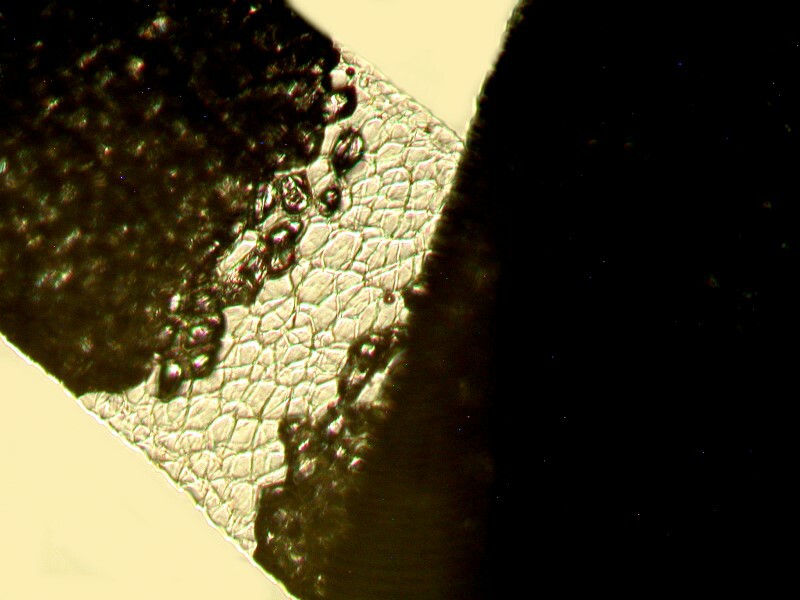
Reindeer BF
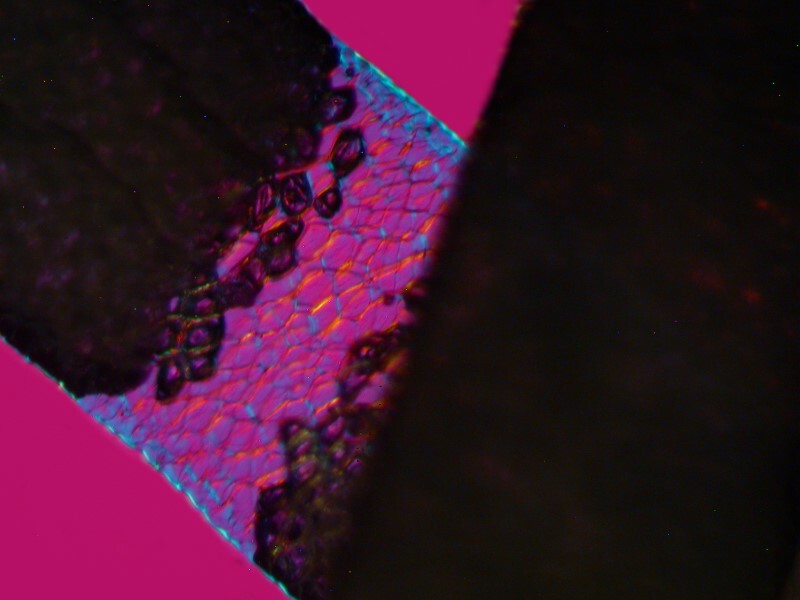
Reindeer Polar
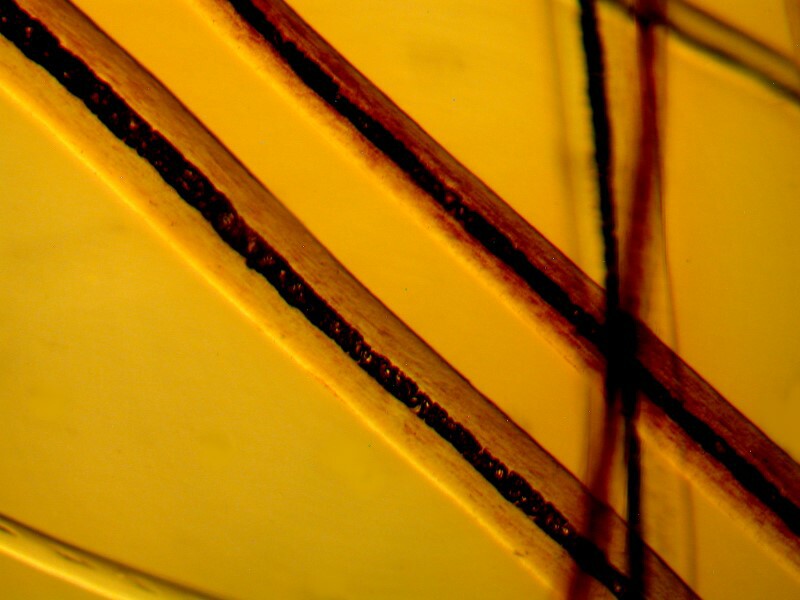
Hedgehog BF
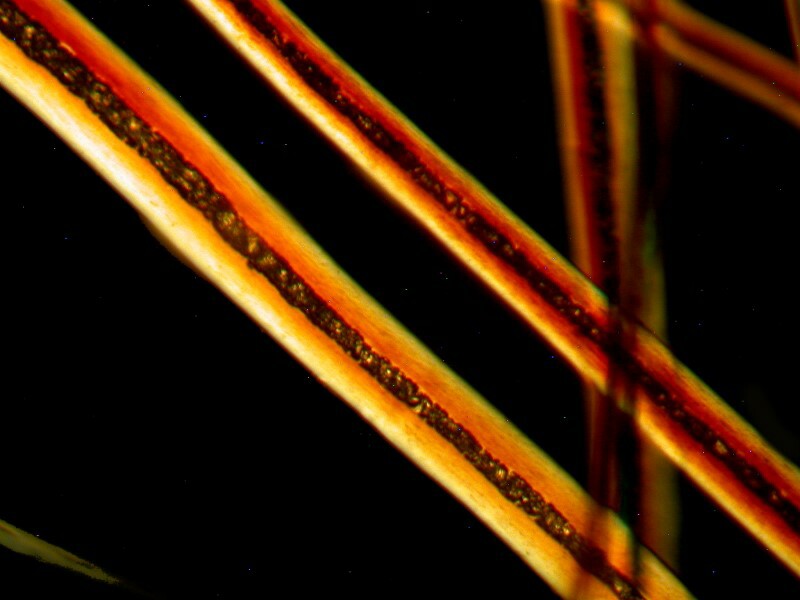
Hedgehog Polar
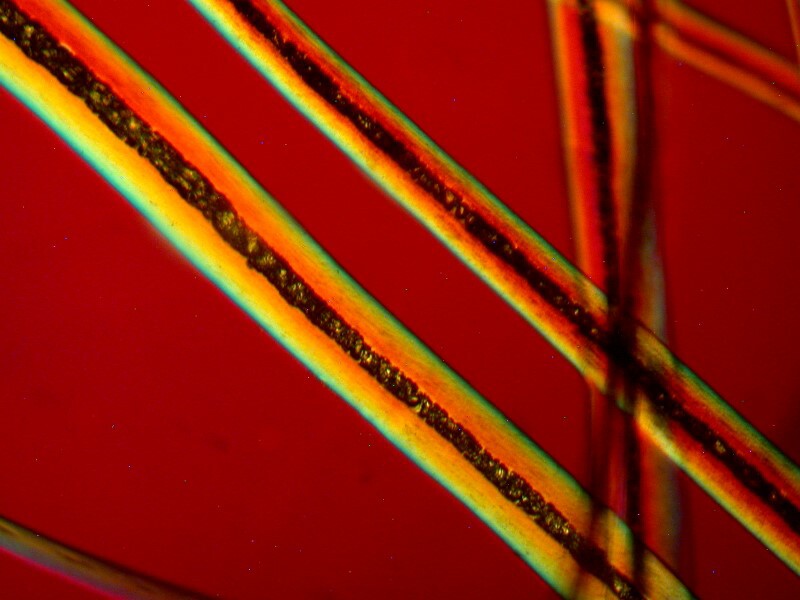
Hedgehog Polar + Red 1
Whether this is a peculiarity typical in certain animals or whether it is a result of damage to the hairs is uncertain. In the sample of hair from a Monkey which I’ll show you, the medulla seems to be constituted of a series of clumps.
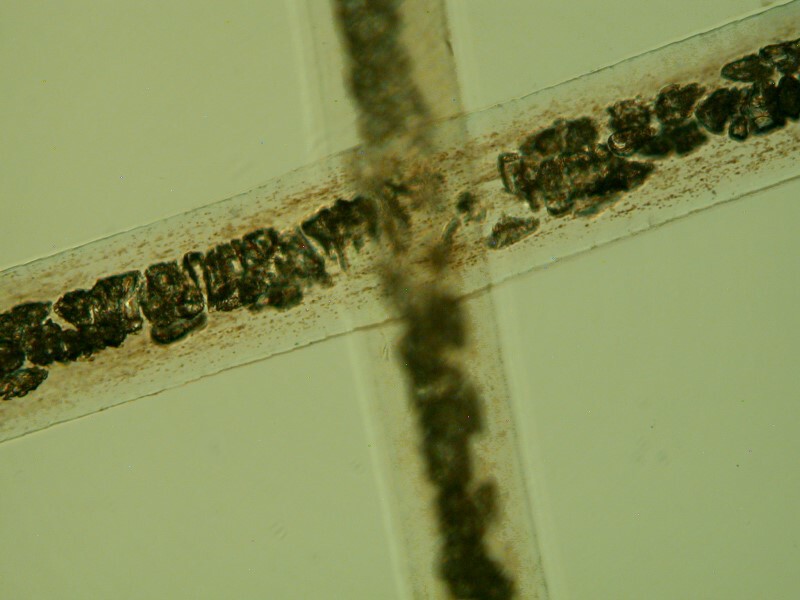
Monkey BF
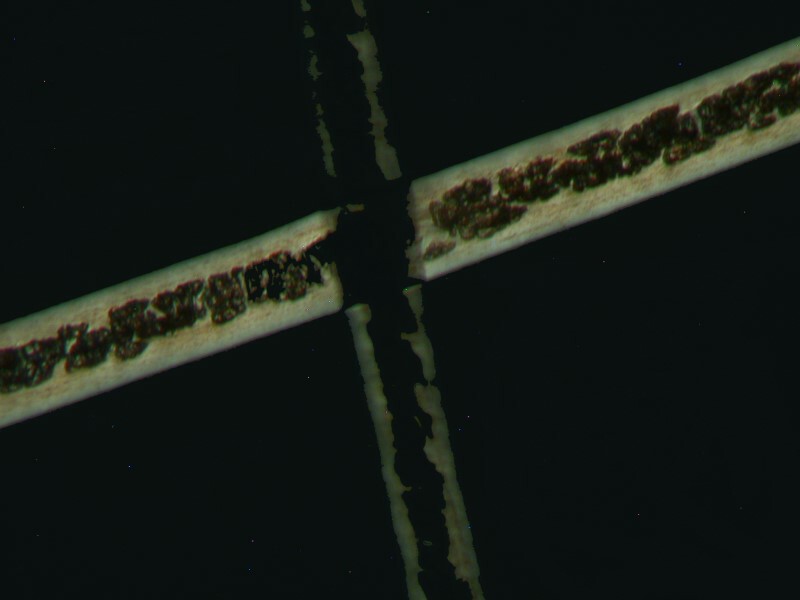
Monkey Polar

Monkey Polar + Red 1
But this kind of pattern can also be found in the “filamentous” medulla, as you can see in this sample of hair from a Mouse.

Mouse BF
This phenomenon is even more evident in thicker hairs as is evident above in the samples from the Monkey and in the image below. This really jumps out at us in the brightfield at higher magnification.

Monkey BF
Now that we seem to be making some progress, it’s time to muddy up the waters and we might in the process even look at some Hare hair.
Human hair is much less variable than animal hair and therefore somewhat less interesting except perhaps to a forensic pathologist.
In animals, the hair morphology may vary depending upon the location on the body and the function. For the sake of simplicity, 5 types are common.
1) Guard hairs which comprise the outer layer and provide protection.
2) The inner layer which consists of the fur or wool hairs that help regulate temperature by providing insulation.
3) Hair from the tail
4) Hair from the mane
5) Sensory hairs or whiskers which provide the animals with highly specialized, mostly tactile, information. The composition of these is of special interest and it has been claimed that ground tiger whiskers introduced into the food of an enemy human produces internal bleeding that can prove fatal. This is a longstanding belief in parts of India, Indonesia, and China and creates the danger of the senseless murder of tigers. In some areas, it is thought that the ground whiskers contain a virulent poison whereas the more common view is that it produces sores, bleeding, and infections in the intestine rather like ground glass would. So, if you’re intent on disposing of an enemy, just go get some ground glass–much easier to obtain and more efficient.
Sorry I can’t show you any tiger whiskers (actually, I’m glad), but I’ll keep a watch out for a lost whisker or two from our noble cat, Vladi, who is kind enough to share his existence with us. (He has, since I wrote this 2 weeks ago, passed on. See the ADDENDUM at the end of this article. If, however, you can’t sympathize with the sentiment of an old man, then ignore it.) NEVER remove whiskers from a cat because they require them for spatial orientation. Unfortunately, I haven’t been able to locate any yet, so I’ll have to substitute a couple of images from a slide which arrived yesterday–3 cross sections of a Walrus whisker. I suspect that these would be capable of causing a serious case of indigestion as well.

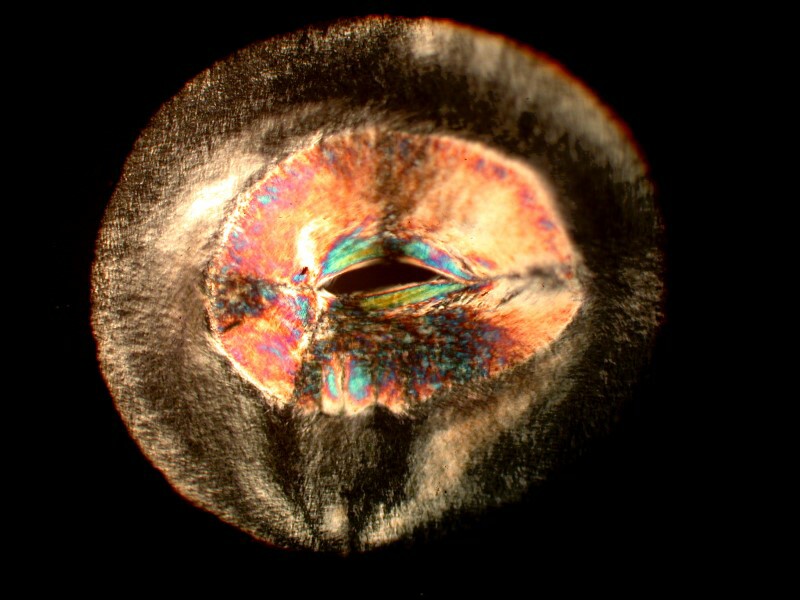
There is also still the issue, of granules, pigments, and ovoid structures which are common in the cortex. Furthermore, I have noticed in perusing the slides and samples that there are extremely thin straight hairs, thick straight hairs, thin curved tangled hairs which almost look like cotton fibers, thin pointy hairs, thick tapering pointy hairs, extremely delicate needle-like hairs, and samples that have 3 or 4 of these all mixed together. So, I’m going to give you a sort of catalog of some of the above with absolutely minimal comment (well, nearly) and then as a special treat, at the end, I’ll show you some Platypus hair and amazingly a cross section of a Peccary hair. So be nice and don’t skip to the end; that would be like jumping to the chocolate rum cake dessert without having eaten your Brussels Sprouts.
Let’s begin with 2 images of Reindeer hair. Here the granulated character of the inner part is very evident in the brightfield view and the cuticle, which shows up blue, is very clear in the polarized image with the Red 1 compensator.

Reindeer BF

Reindeer Polar +Red 1
Next, 2 images which show very fine pointy hair from a Black Rabbit (no doubt from an alternate Wonderland).

Black Rabbit BF
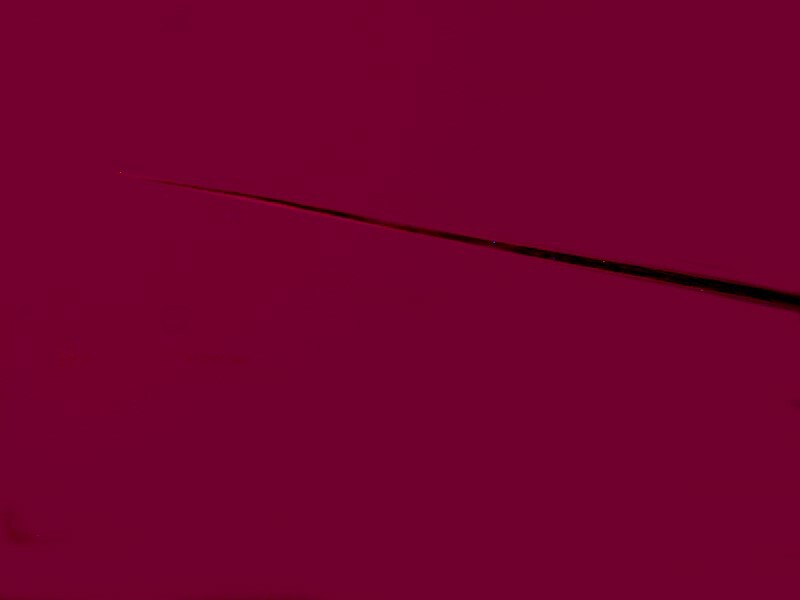
Black Rabbit Polar + Red 1
I always thought that Camel hair would be thick, coarse, and straight but, this particular sample is curly, relatively thin, and tangled–perhaps this allows for greater air flow to provide a kind of cooling.
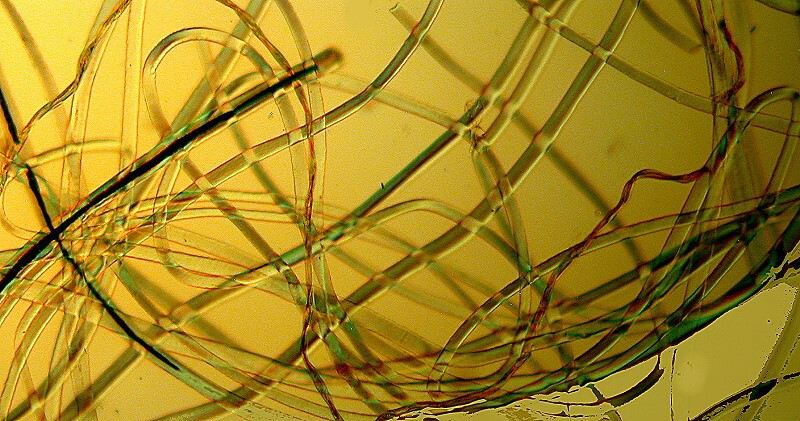
Camel BF
The hair of a Ferret shows a sort of model animal hair with a well-defined, continuous medulla and a distinct cortex. I can’t omit this example, because the last surviving colony of the black-footed ferret was found in Wyoming and an extensive breeding program was established to restore them. Now, they are gradually being re-introduced. Their status is still precarious but, it is certainly better than it was a decade ago. These are certainly very attractive creatures.
http://en.wikipedia.org/wiki/File:Mustela_nigripes_2.jpg
Below is Ferret hair (however, not from the black-footed one) first under polarized light and the polar with a Red 1 compensator.
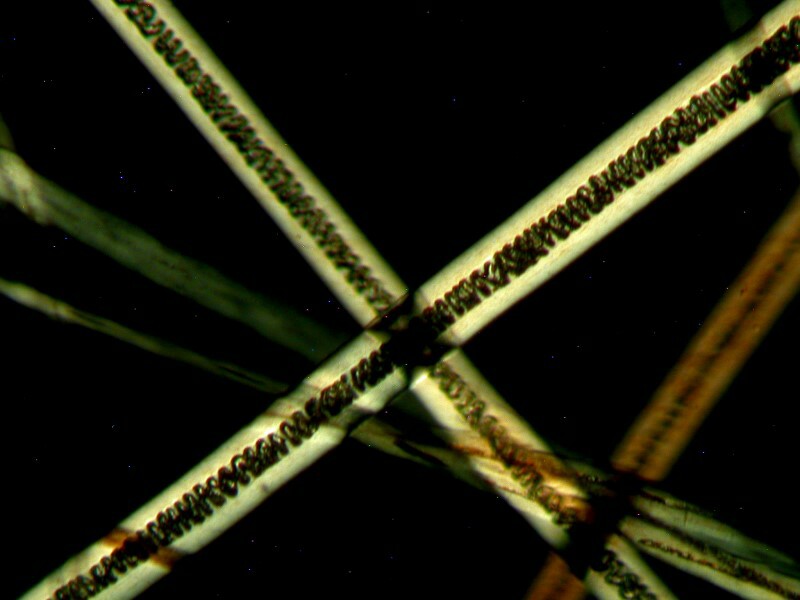
Ferret Polar
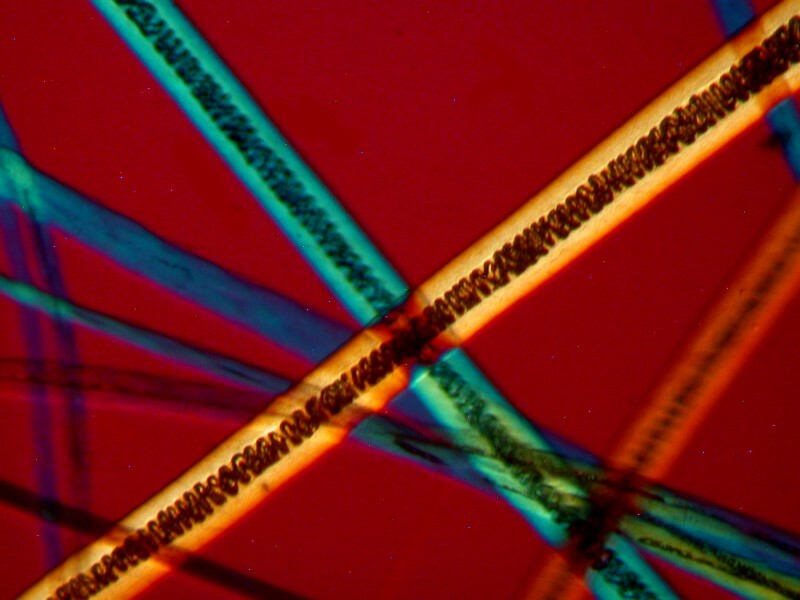
Ferret Polar + Red 1
Another denizen of Wyoming, and often not a very popular one, is the Prairie Dog. Here they form large colonies or “towns” and can create mounds in the middle of dirt or gravel roads producing such rough patches that if one drives too fast, one can break an axle or one’s spine. In trying to navigate such areas, one MUST have a high-profile, 4-wheel drive vehicle, otherwise you’ll rip open the undercarriage and then you’re in for a very long walk. I’ll show you images in brightfield, polar, and polar with a Red 1 compensator. Here, you’ll notice very thin, curved pointed hairs and thick ones containing rows of granules.
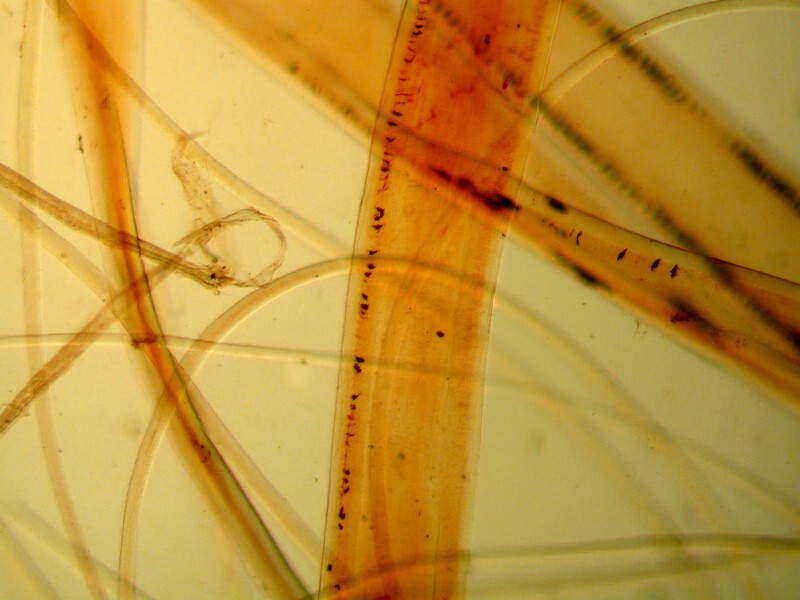
Prairie Dog BF
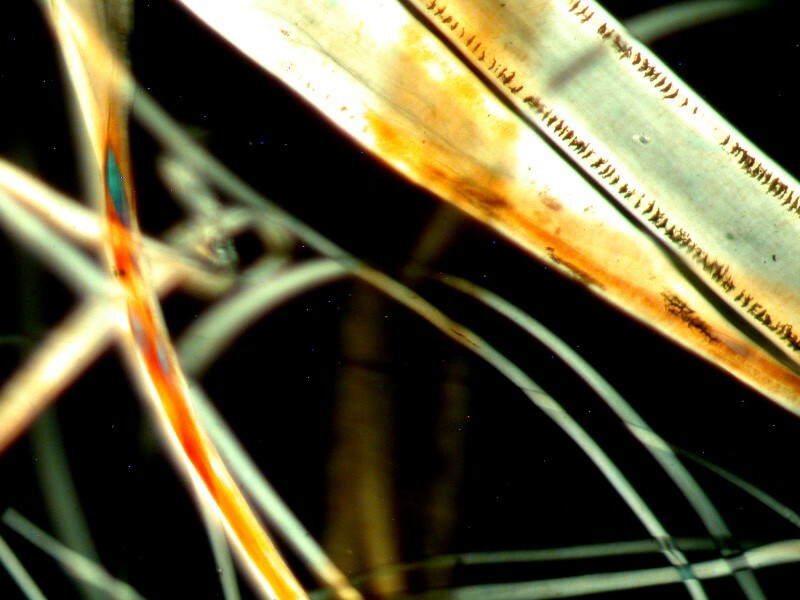
Prairie Dog Polar
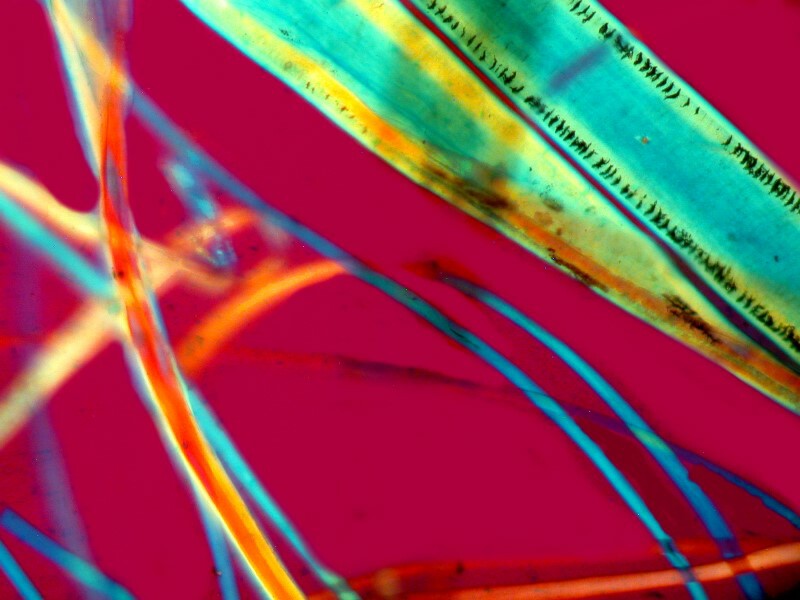
Prairie Dog Polar+ Red 1
A brief aside: I promised you in the last episode some Fitch and Kinsky hair. You will recall that the Fitch is a “polecat”, a type of weasel and is rather more attractive than a Prairie Dog, but its hair is rather less interesting. I’ll show you the same 3 views. The polar view nicely displays examples of the “filamentous” medulla.

Fitch BF

Fitch Polar
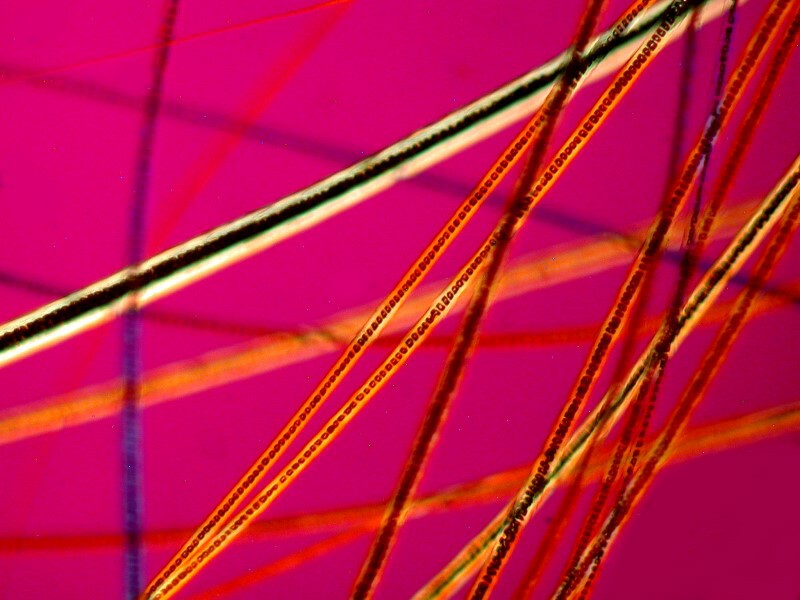
Fitch Polar + Red 1
Next up, Kinsky hair, which you will remember comes from a very aristocratic horse. I showed you one image earlier, but here are 3 following the usual format I used above.
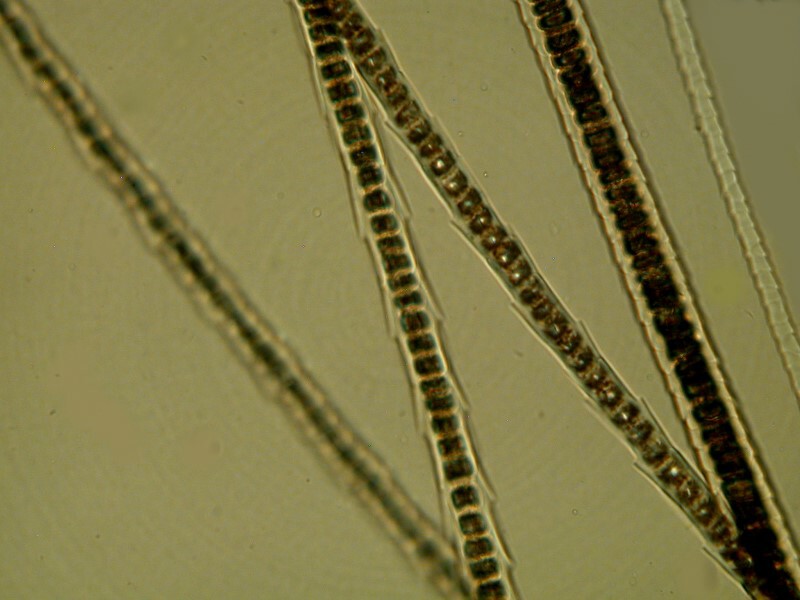
Kinsky BF
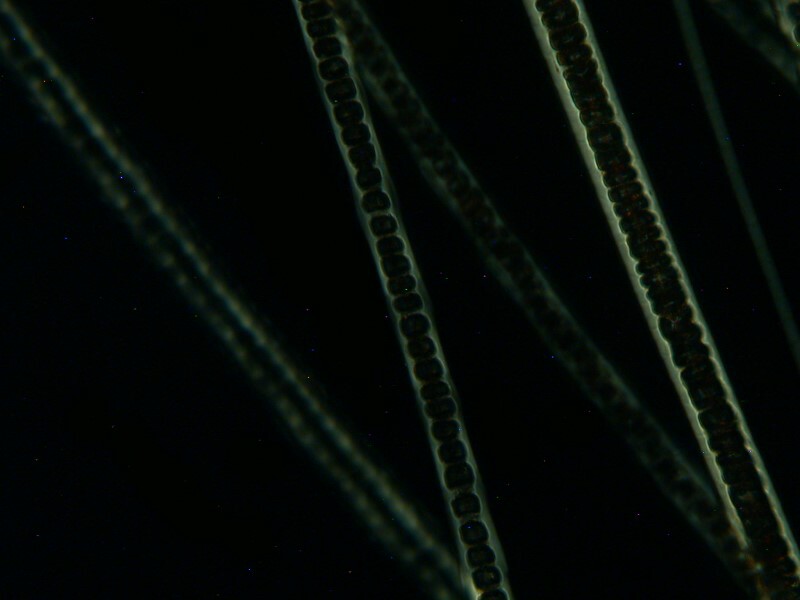
Kinsky Polar

Kinsky Polar + Red 1
Hang in there. Let me give you 3, no, 4, no, 5 or 6 more examples and then we’ll get to the Platypus and Peccary hair samples.
Vicuna hair exemplifies the old phrase: “Oh, what a tangled web we weave...” Like the Camel hair, we find lots of thin hairs forming a virtual mesh and again I wonder if this has to do with temperature regulation, only this time principally cold rather than heat. However, we need to remind ourselves that the deserts get quite cold at night and the high mountain sun is very intense during the day, so these kinds of hair arrangements probably provide a dual function.
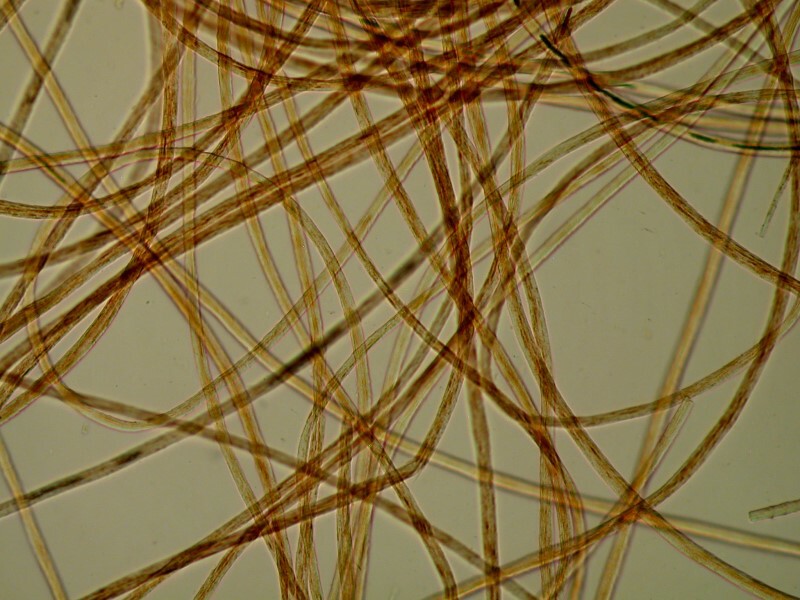
Vicuna BF
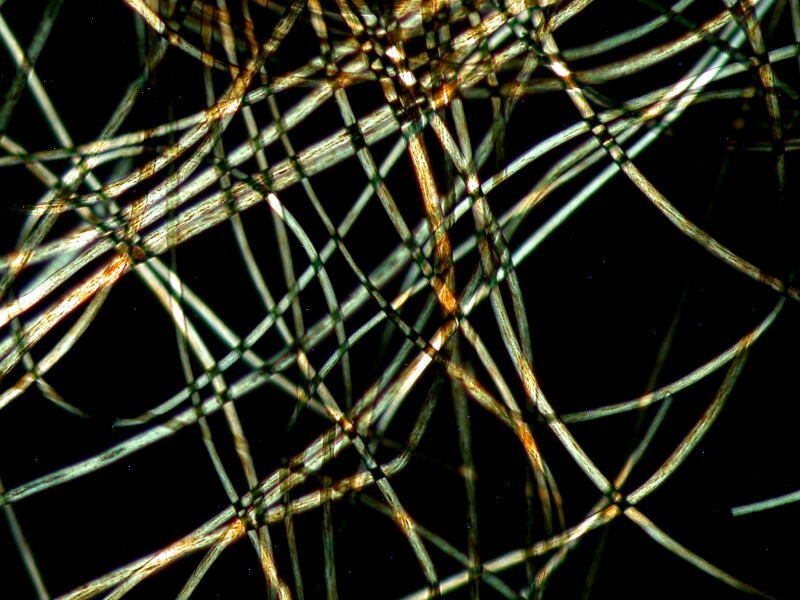
Vicuna Polar
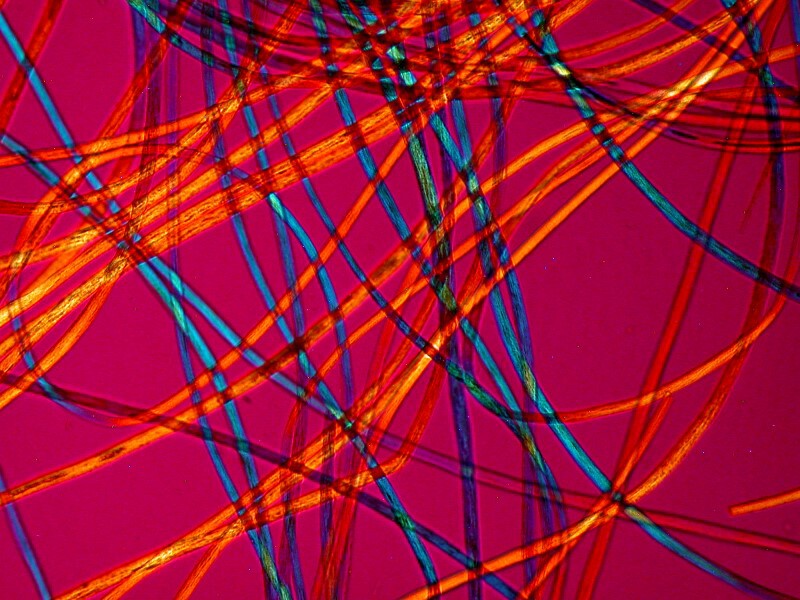
Vicuna Polar + Red 1
Who can resist looking at the hair of an animal called an Ermine Stoat? Ermine fur is exotic, rare, and expensive so this single slide might be worth as much as $5 or $6 on eBay–or $50 or $60–if youfind the right sucker–sorry, customer–with too much money. I’ll give you my standard 3 views and you’ll note that the medulla is very distinct and “granularly filamentous”.
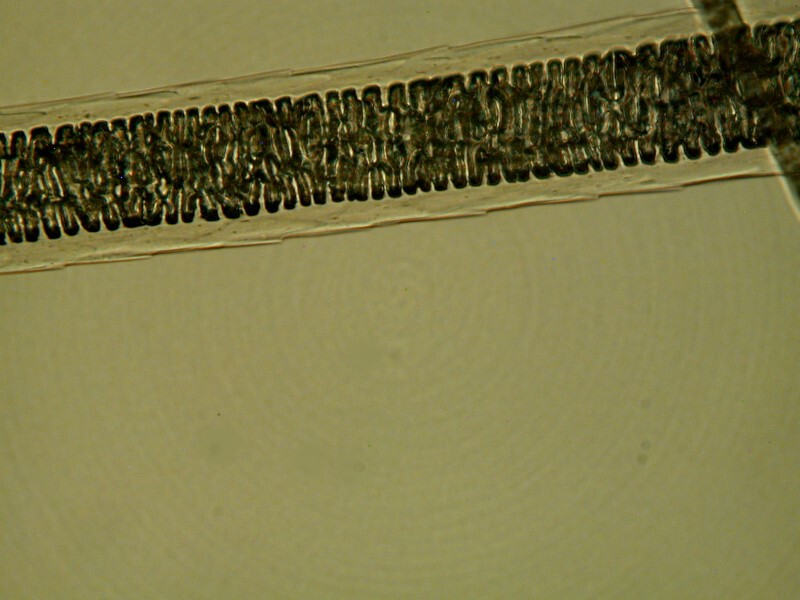
Ermine Stoat BF
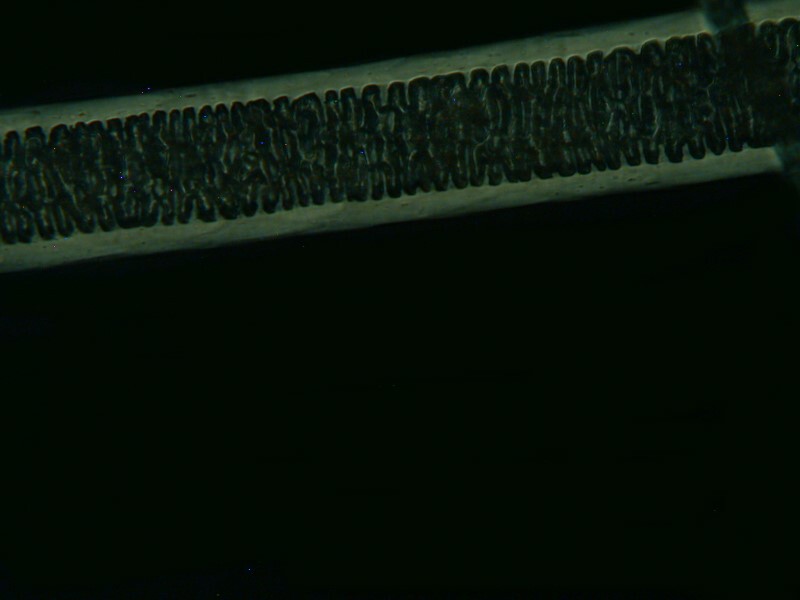
Ermine Stoat Polar
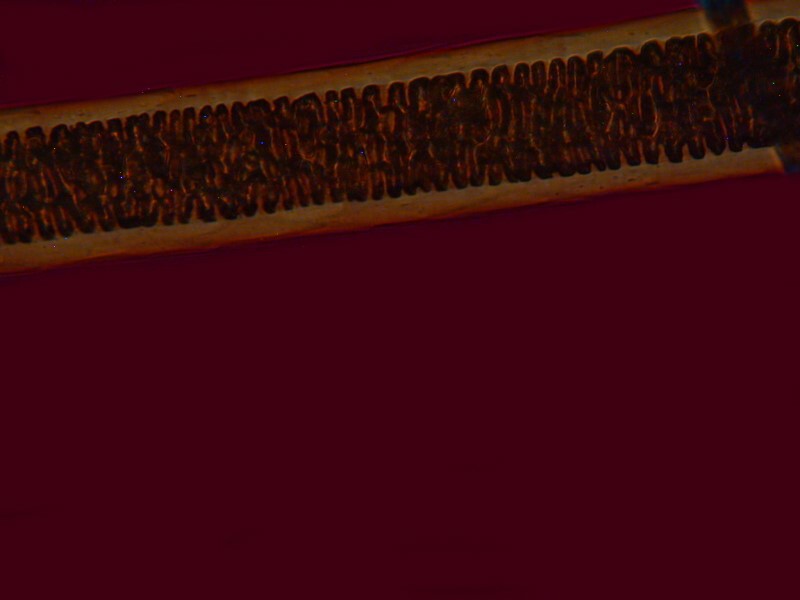
Ermine Stoat Polar + Red 1
Once again, I can’t resist the name of a creature as a criterion for inclusion, in this case a Moth-eared Bat. Here, once more, we see the coronal pattern that we’ve observed in other bat hairs.
http://en.wikipedia.org/wiki/File:Big-eared-townsend-fledermaus.jpg
Interestingly, there is also a bat-eared moth which you might want to have a look at.
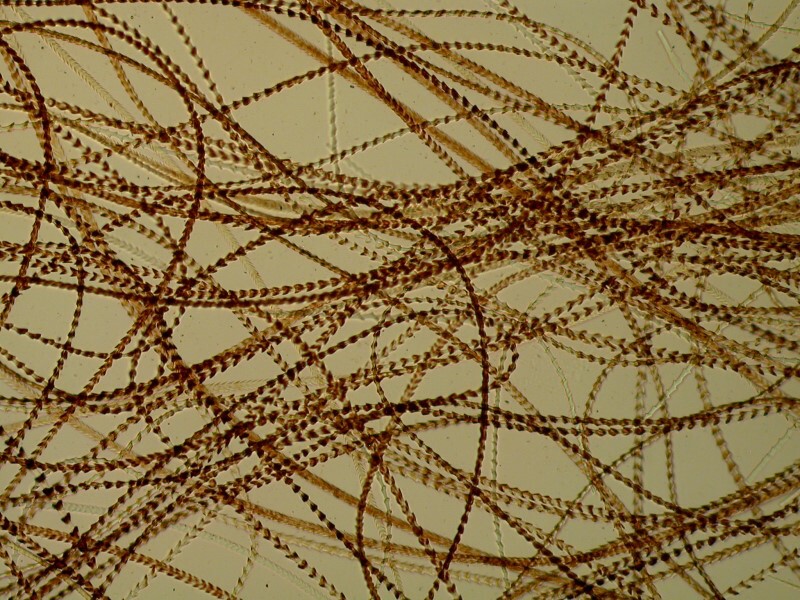
Moth eared Bat BF
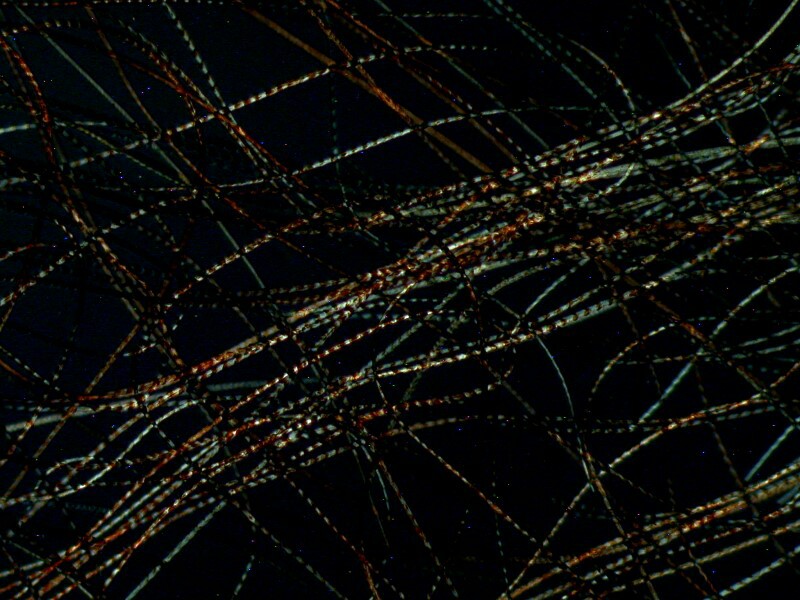
Moth eared Bat 0769 Polar
As I commented earlier, Mr. Grant did a very good job of labeling the slides, with 2 major exceptions–the first being the one with the mystery label which I showed you right off. However, I am rather disappointed that none of you have yet deciphered it; I guess that you’ve all been too busy rushing around collecting hair samples. In a way, the second case is even more exasperating for the label simply reads “Hair”. Perhaps he had grown a bit absentminded or was in a special hurry on that particular day or maybe he simply felt mischievous . The slide is particularly perplexing because of several unusual features in the hairs. Two things in particular caught my attention. The first is that one of the hairs looks like a miniature, dried piece of a stem from a rosebush complete with thorns.
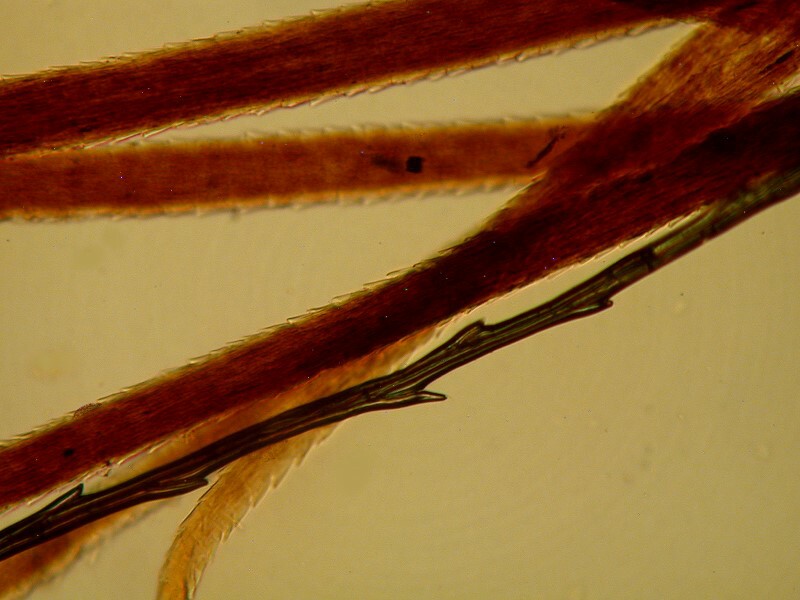
Hair UNKNOWN
The other oddity is that there is a curved, textured structure that looks almost like a miniature scythe.
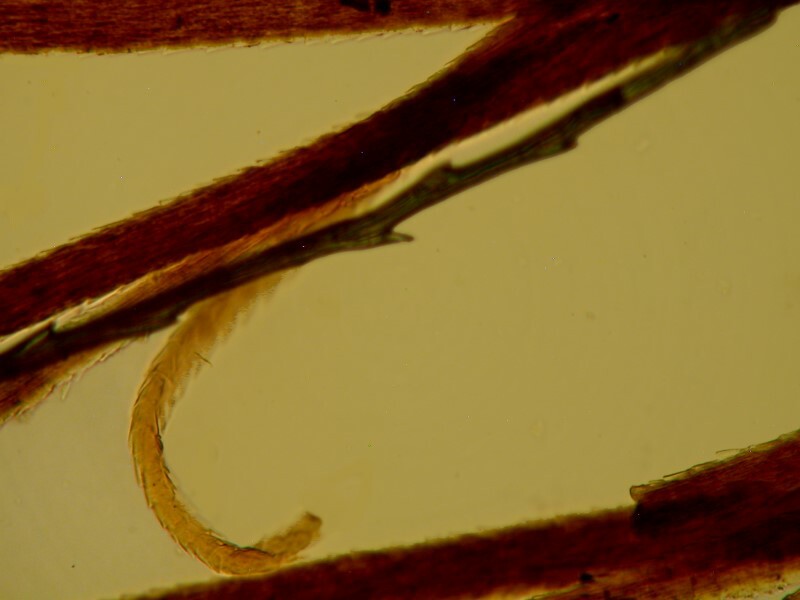
Hair UNKNOWN
I do wish that Mr. Grant had labeled this one rather than leave us guessing.
I promised you earlier a glimpse of some Hare hair. Well, would you settle for a Polish Rabbit? What’s the difference between a Hare and a Rabbit? As it turns out there are a number of highly interesting differences, but I’ll let you do that research.
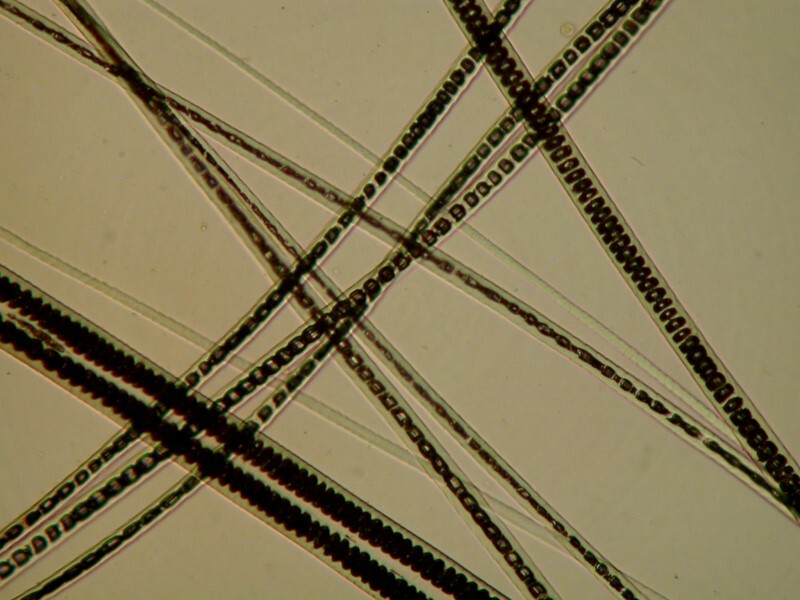
Polish Rabbit BF
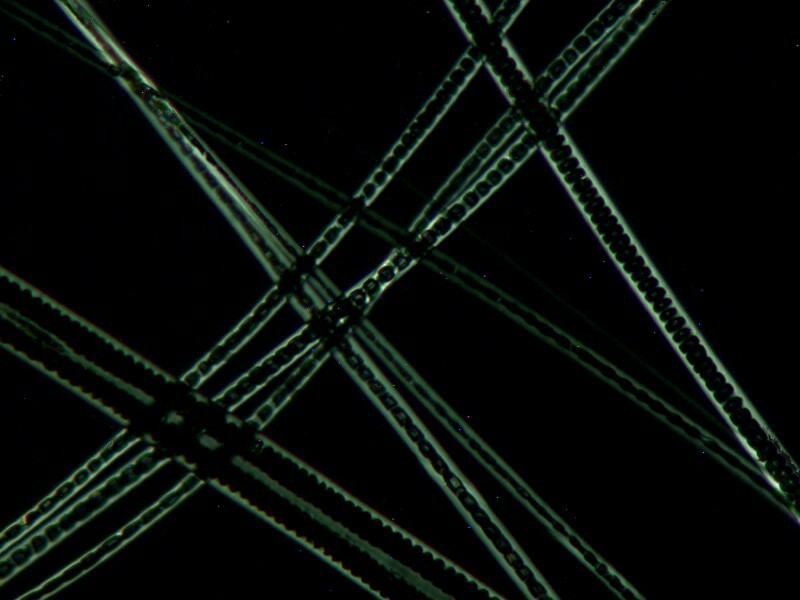
Polish Rabbit Polar
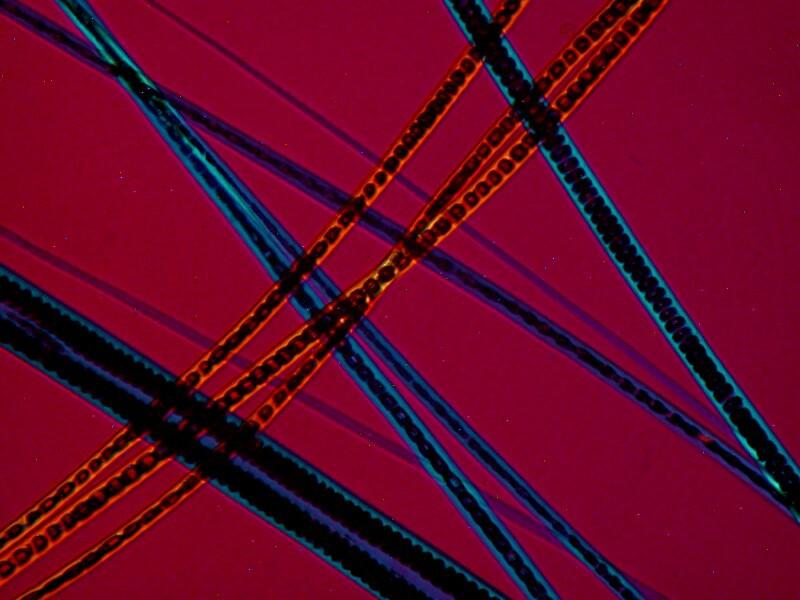
Polish Rabbit Polar + Red 1
Well, at last, we’re nearing the end and are ready to peruse the Platypus sample. The Platypus is, as you know a Monotreme, found only in Australia and Tasmania, and was designed by a committee. They are a classic lesson regarding the radical limits of predictability in the biological sciences. No individual or group could sit down and predict that such a strangely fascinating creature might exist.
I hope, however, that we are all agreed that the offspring of Platypuses should be called Platykittens.
In the images below, you will notice several things: 1) a great variation in the thickness of the hairs, 2) some hairs with a dense arrangement of imbricate scales such as to obscure the medulla, 3) others where we can clearly see a “filamentous” medulla which in some instances is continuous and in others has minor interruptions or breaks.
In this order, I’ll show you two brightfield images which emphasize the differences in thickness and two Polar + Red 1 images.
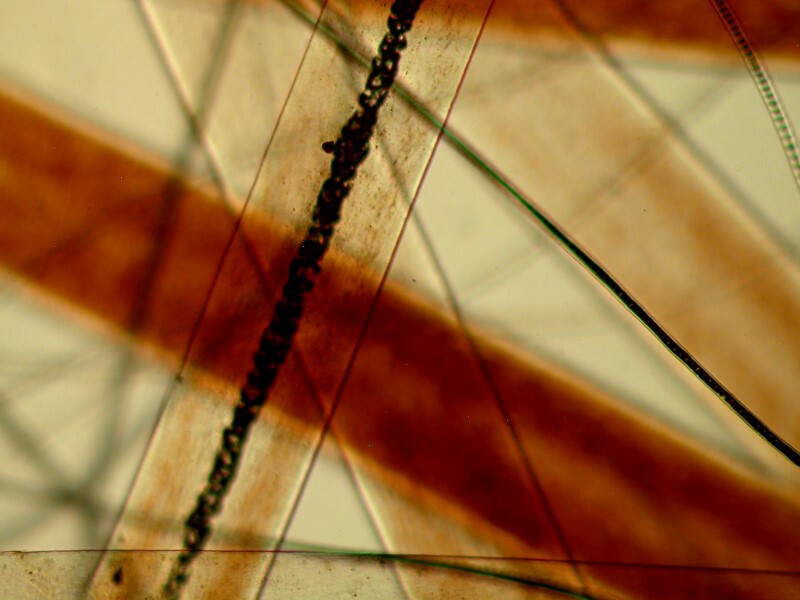
Platypus BF
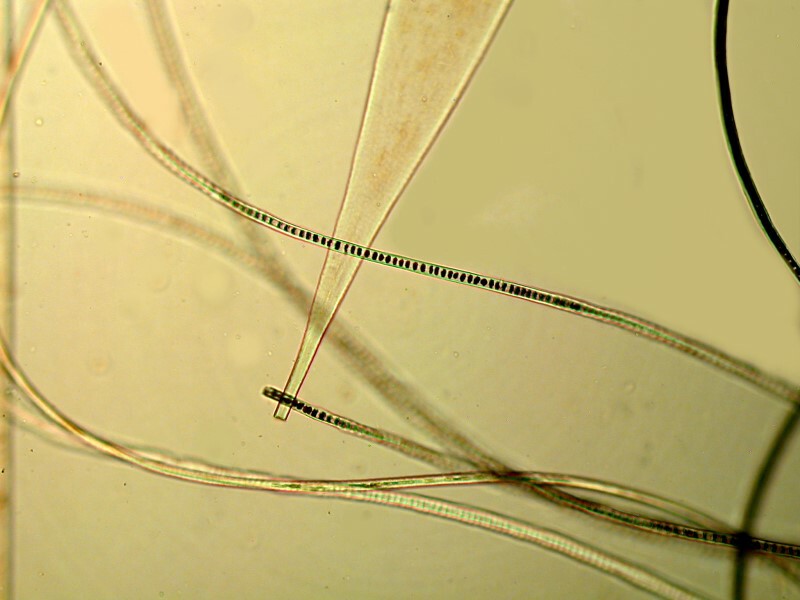
Platypus BF
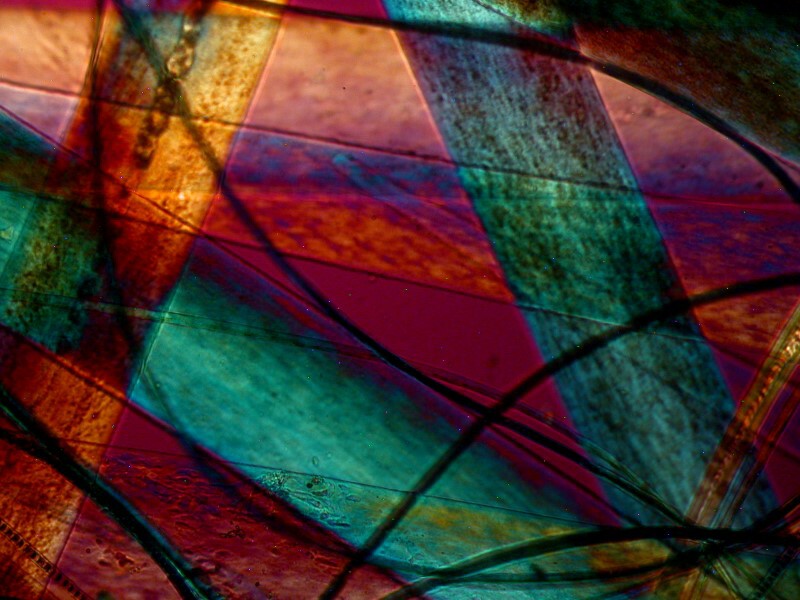
Platypus Polar + Red 1
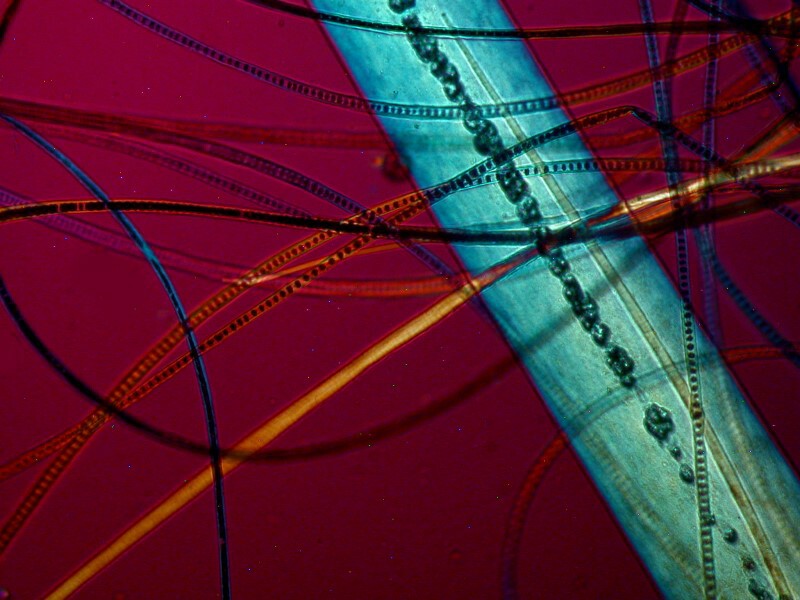
Platypus Polar + Red 1
Finally (oh, what a glorious word!), 3 views of the cross section of a Peccary hair. Peccaries are not exactly glamorous creatures, but that’s not their fault–probably also a product of the Platypus committee.
http://en.wikipedia.org/wiki/File:Collared_peccary02_-_melbourne_zoo.jpg
These images give us quite a different perspective on the cuticle, cortex, and medulla and in 2 of the 3 views, we get a nice sense of the granules. You will recall that these slides are quite old and I would estimate that this one is at least 75 years old. So, what amazes me is that Mr. Grant or someone he knew managed to make such a fine, durable preparation. I realize that microtomes were available in this period and that complex and sophisticated embedding techniques had been developed but, nonetheless, I find it mind-boggling that someone was able to produce this really splendid, thin cross section of a single hair.
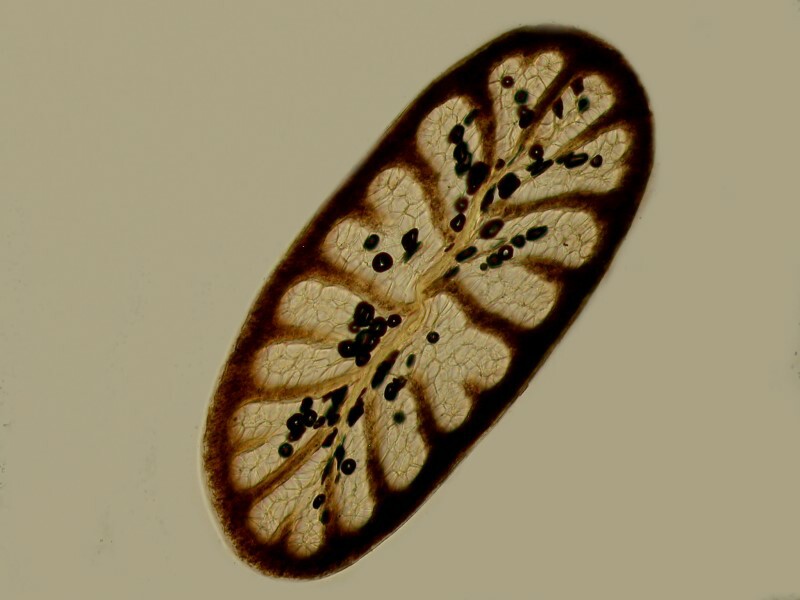
Peccary BF
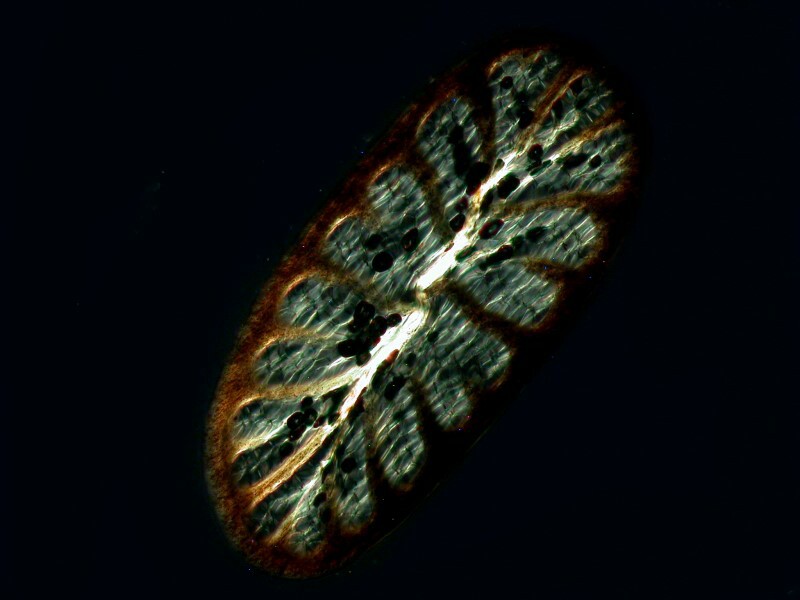
Peccary Polar
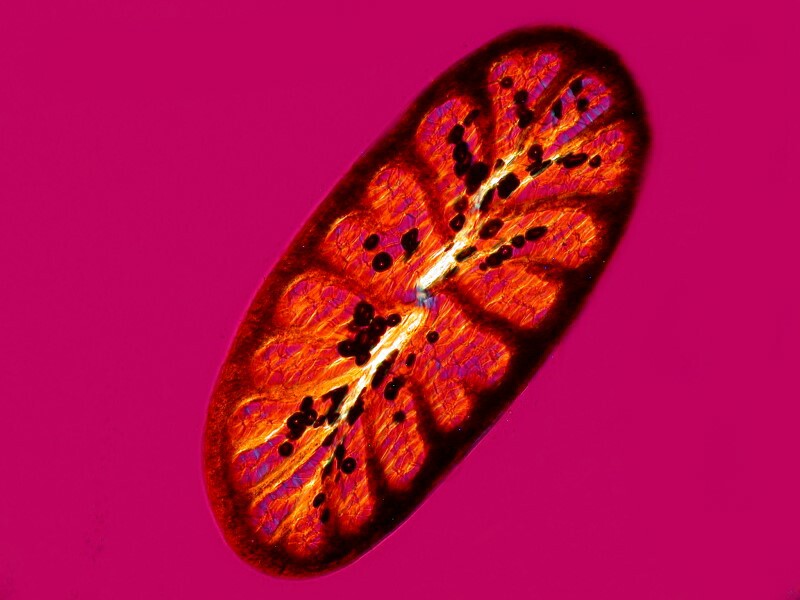
Peccary Polar + Red 1
Whoever it was, he deserves a posthumous prize.
----------------------------------------------------------------------------------------
ADDENDUM
In Memoriam
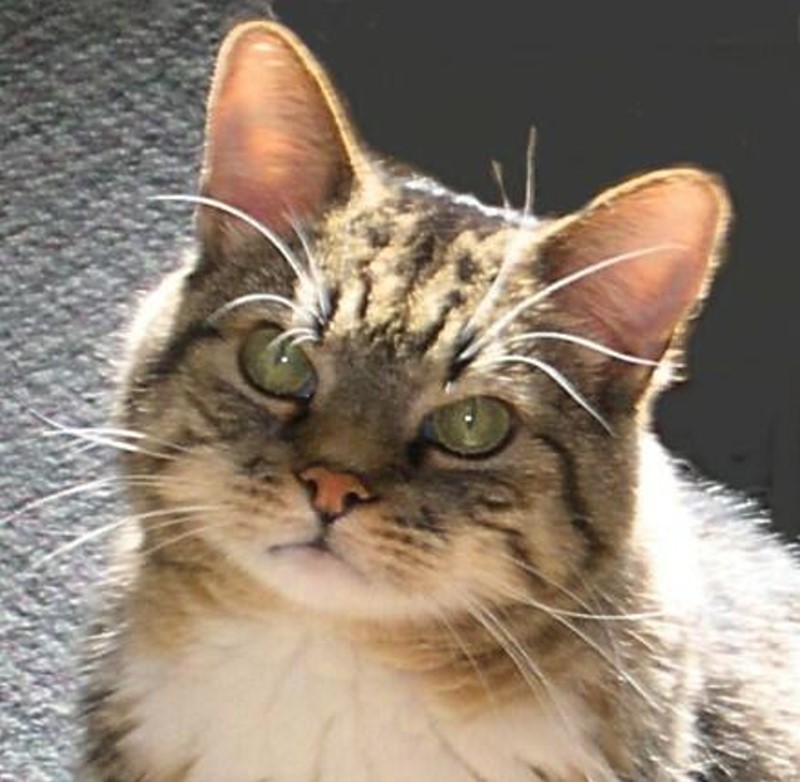
November 3, 2013
Vladi, short for Vladimir, was our wonderful, gentle companion for eighteen years. He contributed not only hair samples when I brushed and combed him each morning, but he was a quiet source of support and inspiration. He would sit on a table next to my computer keyboard when I was working on articles or images for Micscape. He also had his own chair in my lab where he would sit contentedly while I puttered. Ten days ago, he collapsed and died. He is greatly missed. In the 53 years Adri and I have been married, we have never been without cats and/or dogs. While, there can be no substitute for Vladi, we decided that we needed companionship and found two kittens who needed rescuing at the Animal Shelter.
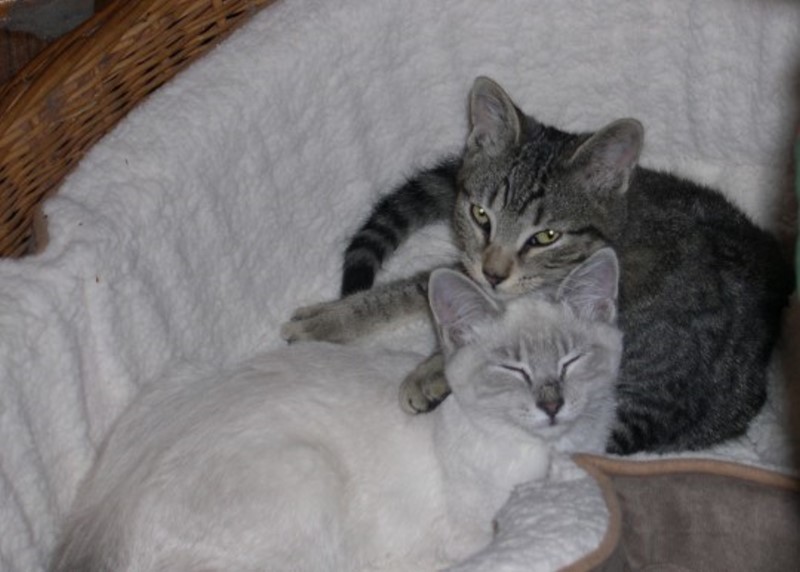
The little female, the light colored one, is part Siamese and is named Princess. The little male, the striped one, is called Hobbes (after the Hobbes in Calvin and Hobbes) and he must also have a touch of Siamese judging from his behavior and demeanor. In any case, we are certain that Vladi would approve of them.
Requiescat in pace, Vladi
All comments to the author Richard Howey are welcomed.
Editor's note: Visit Richard Howey's new website at http://rhowey.googlepages.com/home where he plans to share aspects of his wide interests.
Microscopy UK Front
Page
Micscape
Magazine
Article
Library
Published in the November 2013 edition of Micscape Magazine.
Please report any Web problems or offer general comments to the Micscape Editor .
Micscape is the on-line monthly magazine of the Microscopy UK website at Microscopy-UK .
©
Onview.net Ltd, Microscopy-UK, and all contributors 1995
onwards. All rights reserved.
Main site is at
www.microscopy-uk.org.uk .